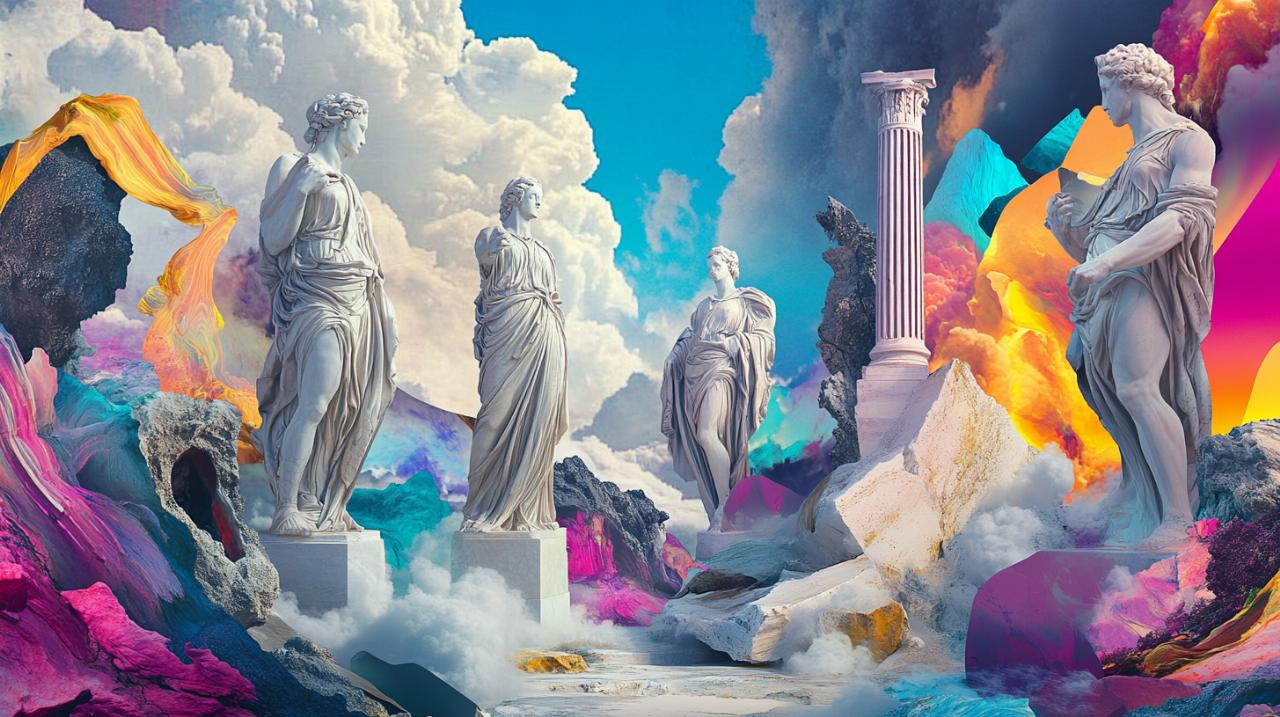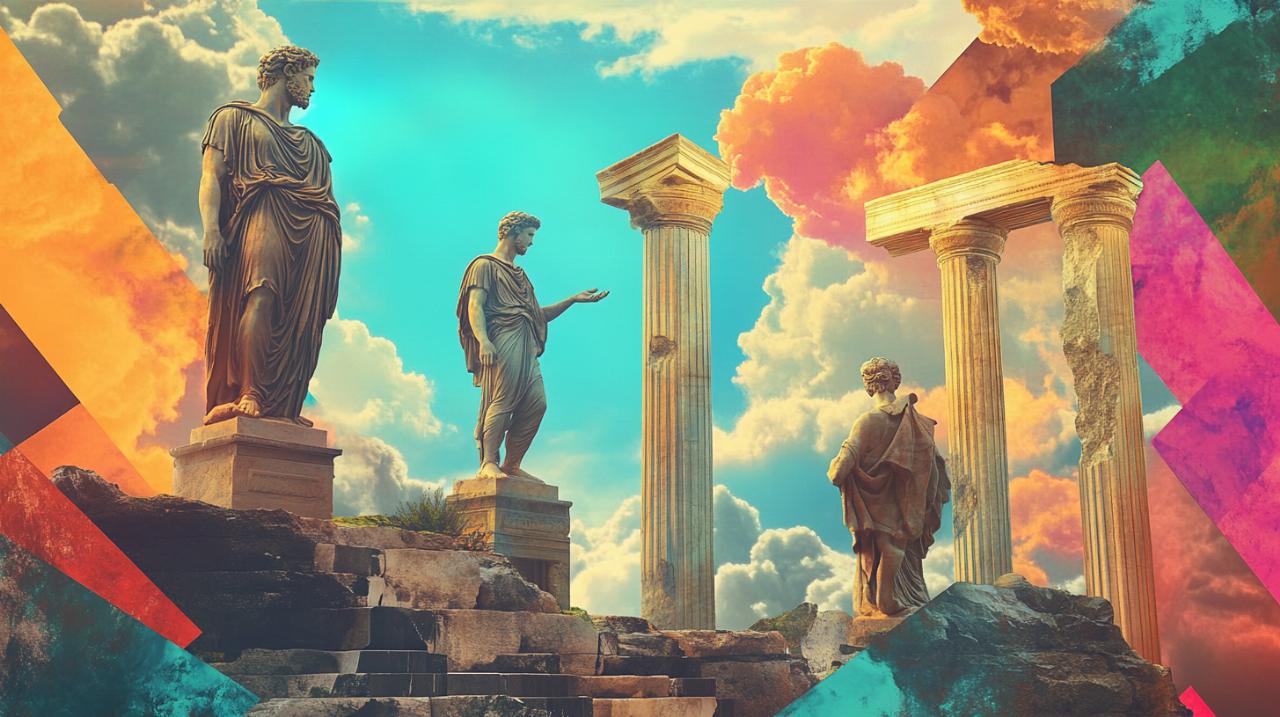The relationship between philosophy and art has long fascinated thinkers, creators, and audiences alike. Both disciplines invite us to question the world around us, to seek meaning in the chaos, and to express the ineffable aspects of human experience. Whether through a painting that challenges our perception of reality or a sculpture that embodies existential questions, the dialogue between these two realms continues to shape our cultural landscape. This exploration reveals not only the depth of human creativity but also the enduring quest to understand what it truly means to exist.
The historical bond between philosophical thought and artistic expression
Throughout history, philosophy and art have been inextricably linked, each influencing and enriching the other. The ancient Greeks, for instance, pondered the nature of beauty and truth, laying the groundwork for aesthetic philosophy. Plato famously questioned the role of art in society, suggesting that it was but a shadow of reality, a mere imitation of the forms that exist in a higher realm. His allegory of the cave remains a powerful metaphor for the way art can both illuminate and obscure our understanding of the world. Yet, even as Plato expressed scepticism, artists continued to explore these philosophical ideas, creating works that invited viewers to question their own perceptions and beliefs.
Ancient roots: from plato's cave to renaissance masterpieces
The Renaissance marked a particularly vibrant period in the interplay between philosophy and artistic expression. Artists such as Leonardo da Vinci and Michelangelo were not merely craftsmen; they were philosophers in their own right, grappling with questions of human anatomy, perspective, and the divine. Their works embodied the humanist ideals of the era, celebrating the beauty and complexity of the human form while also reflecting deeper moral and existential concerns. The meticulous attention to detail in a Renaissance painting was not just about capturing physical likeness but about revealing the inner life and spirit of the subject. This period demonstrated that art could serve as a visual language for philosophical inquiry, offering new ways to engage with profound questions about identity, morality, and the nature of existence.
Modern movements: existentialism and abstract art
As we moved into the modern era, the connection between philosophy and art evolved in response to changing societal values and intellectual currents. Existentialism, with its emphasis on individual freedom, choice, and the often absurd nature of existence, found a natural ally in abstract art. Artists began to break away from traditional forms and representations, creating works that defied easy interpretation and invited viewers to confront their own uncertainties. The bold colours and fragmented forms of abstract expressionism, for example, mirrored the existentialist belief that meaning is not inherent but must be created by each individual. This movement challenged audiences to think critically about the role of art in society and the ways in which we construct meaning in a world that often seems devoid of it. The influence of existentialist thought on contemporary art remains evident today, as artists continue to explore themes of alienation, freedom, and the search for authenticity.
How artists challenge and reinforce philosophical concepts through their work
 Artists have long used their creative practice to engage with philosophical ideas, sometimes challenging prevailing notions and at other times reinforcing them. The act of creation itself can be seen as a form of philosophical inquiry, a way of asking questions about the nature of reality, the limits of perception, and the essence of beauty. By translating abstract concepts into visual or performative forms, artists make philosophy accessible and tangible, inviting a broader audience to participate in these age-old debates. The works exhibited at venues such as Eclectic Gallery, which features a diverse range of styles from surrealism to minimalism, exemplify this ongoing dialogue between art and philosophy. Each piece encourages viewers to ponder the deeper meanings and to question their own assumptions about the world.
Artists have long used their creative practice to engage with philosophical ideas, sometimes challenging prevailing notions and at other times reinforcing them. The act of creation itself can be seen as a form of philosophical inquiry, a way of asking questions about the nature of reality, the limits of perception, and the essence of beauty. By translating abstract concepts into visual or performative forms, artists make philosophy accessible and tangible, inviting a broader audience to participate in these age-old debates. The works exhibited at venues such as Eclectic Gallery, which features a diverse range of styles from surrealism to minimalism, exemplify this ongoing dialogue between art and philosophy. Each piece encourages viewers to ponder the deeper meanings and to question their own assumptions about the world.
Visual narratives: depicting moral dilemmas on canvas
One of the most compelling ways artists engage with philosophy is through visual narratives that depict moral dilemmas and ethical questions. A painting might portray a moment of choice, a scene fraught with tension, or a character caught between competing values. By freezing these moments in time, the artist invites the viewer to step into the scene and consider what they might do in a similar situation. This approach transforms the canvas into a space for moral reflection, where the boundaries between right and wrong, freedom and constraint, are explored with nuance and subtlety. The use of colour, composition, and symbolism all contribute to the narrative, guiding the viewer through a complex web of ideas and emotions. In this way, art becomes a powerful tool for philosophical exploration, one that speaks to both the intellect and the heart.
Sculptural Forms: Embodying Questions of Existence and Identity
Sculpture, with its three-dimensional presence, offers another avenue for engaging with philosophical concepts. The physical form of a sculpture can embody questions of existence and identity in ways that are both literal and metaphorical. A figure carved from marble might represent the tension between the permanence of stone and the fleeting nature of human life, while an abstract assemblage of materials might challenge our notions of what constitutes a body or a self. The tactile quality of sculpture invites a different kind of engagement, one that is rooted in the body and the senses. As viewers move around a sculptural work, their perspective shifts, revealing new angles and interpretations. This dynamic interaction mirrors the way we navigate our own identities and the world around us, constantly reassessing and redefining our place in the larger scheme of things. By embodying these philosophical questions in physical form, sculptors create works that resonate on a deeply human level, reminding us of the fragility and strength inherent in the human condition.
The intersection of philosophy and art continues to be a fertile ground for exploration and discovery. Whether through the historical examples of the past or the innovative practices of contemporary artists, this dialogue enriches our understanding of both disciplines. It challenges us to think critically, to question our assumptions, and to appreciate the myriad ways in which creativity and thought can come together. The works showcased at Calle Cultura art spaces and similar venues remind us that the quest for meaning is an ongoing journey, one that is as much about the questions we ask as the answers we find. As we engage with these artworks, we are invited to reflect on our own lives, our values, and the broader cultural context in which we exist, ultimately deepening our appreciation for the rich tapestry of human experience.
